Good morning friends!
Here I come with the second post of June, which marks the beginning of the summer!
Last week I was reading one of these papers that starts listing relevant applications made with UHPC up to date. I noticed that they did not mention any from Spain, and possibly the reason is that despite the variety of structures commissioned in this country, few efforts have been dedicated to disseminate them. I decided then to do my small part writing this post to summarize the most relevant milestones building with UHPC in the land where I was born. I hope that you like it 😊
To my view (possibly most of you share this opinion with me), some countries riding on the crest of the UHPC wave are France, Switzerland, Denmark, Japan, and US. Among the common structural applications in them are the construction of singular buildings, the production and reparation of bridge decks and their joints, and the construction of (foot)bridges and balconies.
However, in Spain, the efforts have progressed to relatively different sectors. In fact, the first use of UHPC in Spain (year 2003, when the material was not yet a teenager) would sound curious today, as it consisted in the elaboration of composite columns for the Reina Sofia Museum in Madrid. Ductal®-AF was the material selected to pour the elements, which had a height of 16 m and a diameter of 32 cm [1]. Unfortunately, few information is available from that project, which was also a landmark at international level.
Ten years had to pass to meet the second application, but the wait was worth: In 2013, the footbridge over the Oveja’s Ravine was built in the Mediterranean city of Alicante. Designed by Juan Ángel López (co-founder of RDC and PREFFOR), a student from the team of Professor Pedro Serna (Universitat Politècnica de València), this 43-m span and 3-m width structure became the first world truss footbridge made only with UHPC. The UHPC mix was designed by Esteban Camacho (co-founder of RDC and PREFFOR) using locally available materials and reached an average compressive strength of 150 MPa with air curing.
The contractor was Vías y Construcciones SA and the engineering company in charge or the Project was Icosa Ingeniería Civil SA, where the Project Manager was Hugo Coll, co-founder of RDC and PREFFOR. The work was possible thanks to the open attitude of the Generalitat Valenciana when this great innovation was proposed to them.
The structure won the Civil Engineering Award 2013 from the Spanish Association of Civil Engineering ACHE, and the ACI Construction Award 2019 for the outstanding contribution to the industry of their designers. Today, almost 10 years later, the structure has not required any maintenance and remains in perfect conditions under the environmental exposure class XS1.


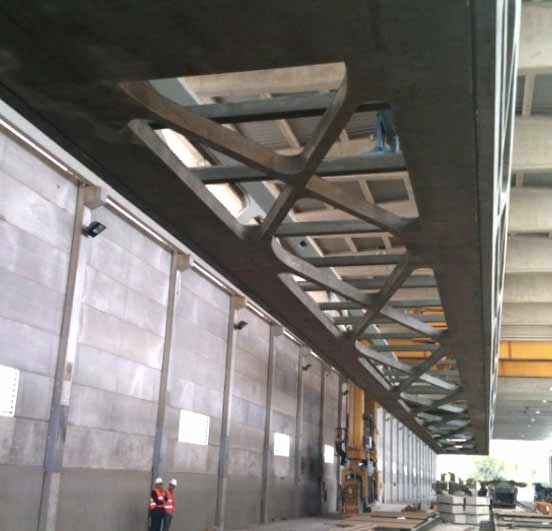
After this successful experience, two more footbridges came in years 2014 (over the V-21 motorway in Puçol, Valencia) and 2016 (structure to visit the recycling company Reciclados Ribera del Xuquer, in Valencia), in this case designed by Hugo Coll, Fernando Galán and Juan Ángel López, co-founders of RDC, an engineering firm that was officially created in 2015 (www.rdconcrete.com). Regarding the first, the engineering company in charge of the project was, again, Icosa Ingeniería Civil SA, and the document was signed by Hugo Coll, Fernando Galán and Juan Ángel López, co-founders of RDC, an engineering firm that was officially created in 2015 (www.rdconcrete.com). The contractor was Pavasal and the final client the Generalitat Valenciana, which wanted to support again the innovative SMEs of the region. In the case of Guadassuar footbridge, the Project was already elaborated by RDC, the engineering company specialized in UHPC.
These structures have spans of 30 to 33 m and a constant depth, achieving a more industrialized solution that combines slenderness with minimum maintenance costs in comparison with other options.
Precasting these elements was possible thanks to the continuous support and control of the production provided by RDC to different precast companies, which accepted the challenge to produce these innovations.


Footbridge over the V-21 highway. Puçol. 2014


All these footbridges had as deck 35-mm thickness UHPC panels without rebars, made with hybrid UHPC or with hooked-end macrofibers. This solution has been used in many other applications since 2016 as technical flooring with maximum dimensions of 2×3 m.
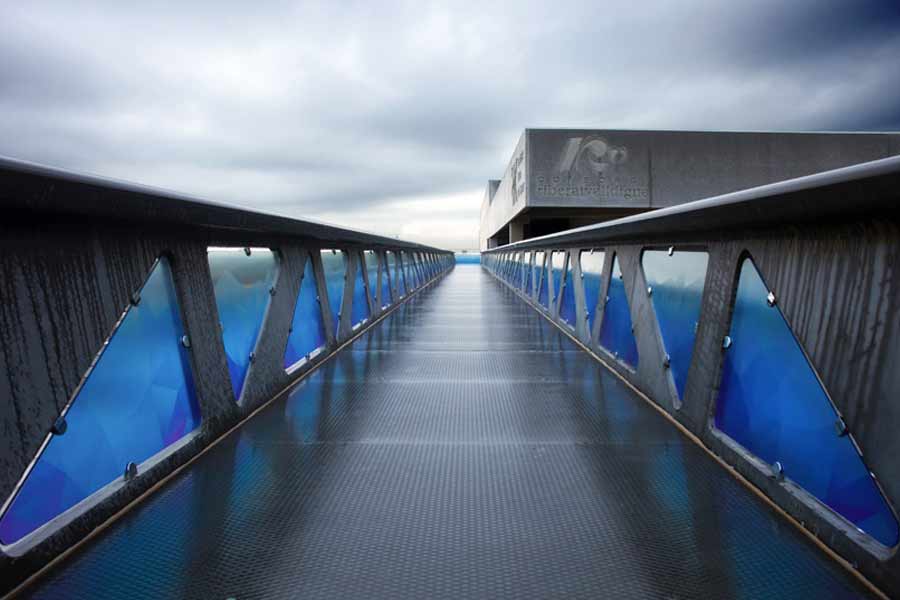

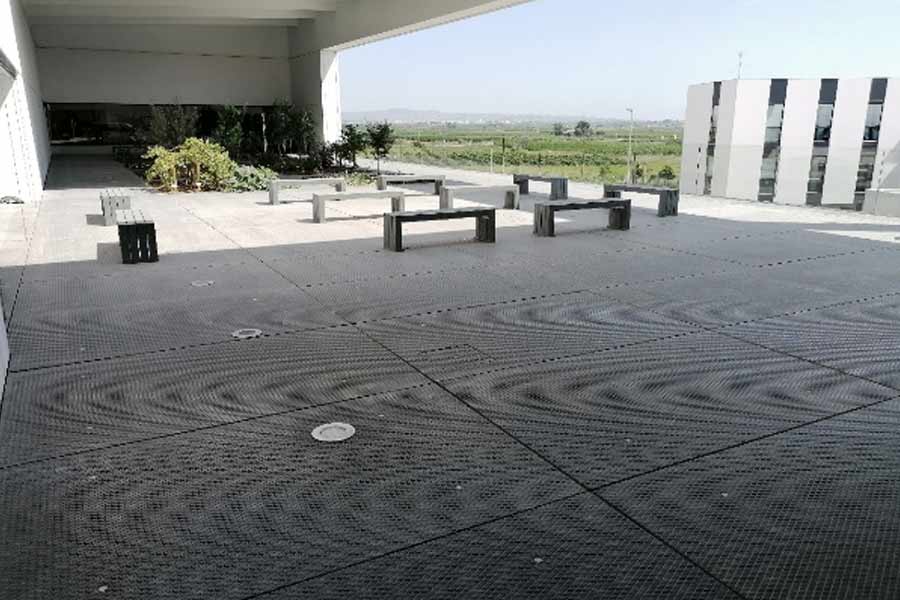
In 2018, RDC founders decided to open their own precast company specialized in UHPC: PREFFOR. This facilitates the precasting of these elements because the company owns all the value chain of the UHPC structures. Thanks to that, in 2021 the fourth UHPC footbridge in Spain was installed in Sollana, with a span of 15.4 m. and for the company SOGESER. Before the end of 2022, a fifth footbridge with two spans of 35 m will be commissioned next to Valencia.


Well, let’s come again to 2016, after the installation of the third footbridge in Spain. The previous year (2015), RDC team identified a significant problem of durability in the aquaculture sector: The 3.337 floating farms that exist in Galicia to harvest mussels are made of eucalyptus wood, and they have rarely a lifespan longer than 10-15 years. Thus, they decided to propose a similar structure but made of UHPC beams, maintaining the same weight and adaptability of the structure to the waves, but with much higher durability and resiliency. This UHPC raft was baptized as the Formex® raft, being Formex® the mix design of RDC used by PREFFOR. In October of 2016, they installed a first prototype of 365 m2 for AZTI in the Cantabric Sea. This became the first world floating structure of UHPC, and the first application of this material in aquaculture.
Thinking in terms of business strategy, the idea of launching such product to the market may sound crazy, because UHPC floating farms have four clear barriers to sell:
► Mindset barriers from the fisherman: They do not trust concrete because they have seen during their life many corrosion pathologies in the ports.
► Logistic barriers: PREFFOR factory is 1.000 km far from Galicia, where the market demand is and where the competitors that cut the trees are located. This implied an additional difficulty to meet the client and deliver the orders.
► Price barriers: The UHPC solution is up to 25% more expensive than the traditional one, as the product is submitted to an intense control that is not done to the timber logs.
► Knowledge barriers: RDC was expert in advanced materials, but not in seafood. Despite these barriers, there was a key fact that suggested to enter in the market: The clients (=payers) are also the maintainers of the rafts, and they are well aware of how much they pay and suffer every year protecting and repairing their wooden structures. Thus, the UHPC farms were launched to the market, and currently there are more than 20.000 m2 of structures floating not only in Galicia, Vasc Country or Valencia, but also in the Adriatic, the North Sea, and the Baltic Sea.
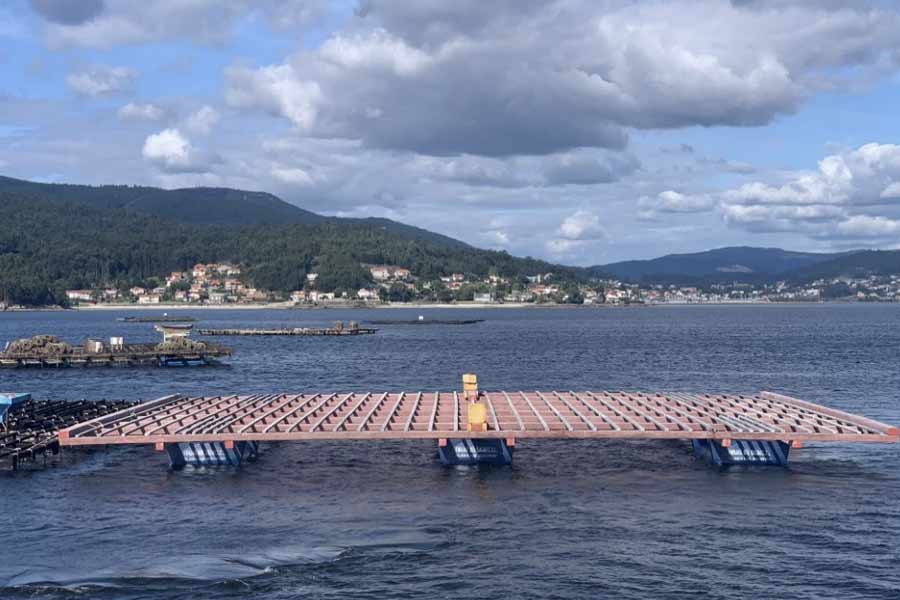
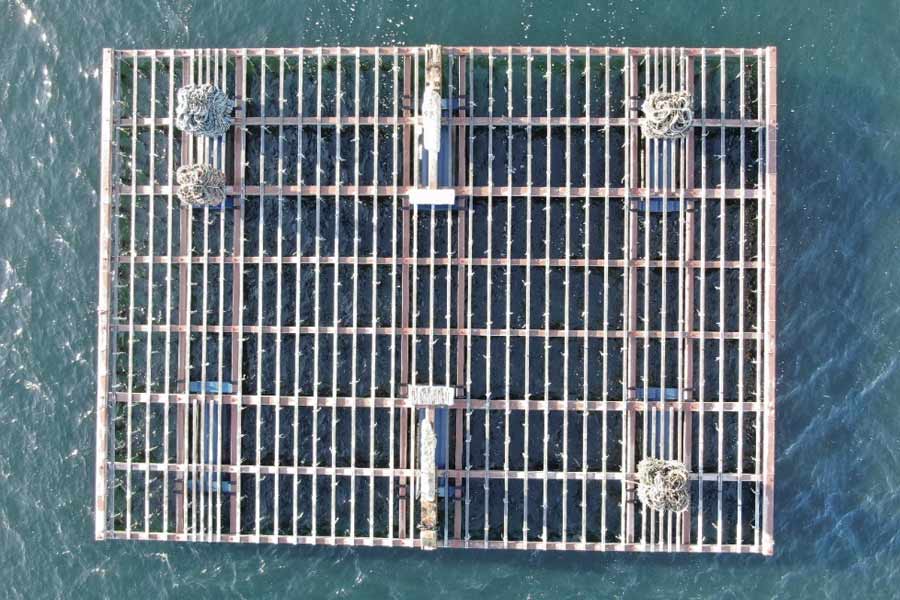
The figure below shows the inspection of the first UHPC raft after 5 years of its installation (2016-2021). Despite of being under environmental class XS3 and submitted to waves of up to 1.2 m, the structure was in perfect conditions and without signs of corrosion. The Formex® rafts submitted to waves of up to 3.7 m (Baiona Estuary, Galicia) are also in perfect conditions.
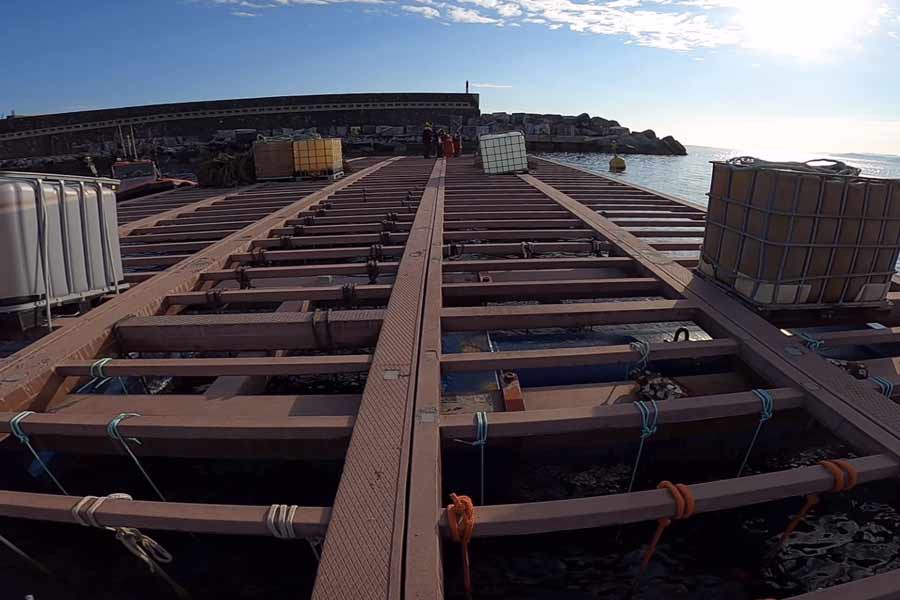
Two years after this experience, in 2018, the first UHPC road bridge in Spain was designed (RDC) and built (PREFFOR). It consisted in the installation of the span (7 m) destroyed by the flow of the Vernissa river on year 2007. The contractor was the company TECOPSA and the client was the Diputación de Valencia.
The solution consisted of three bidirectional UHPC precast elements (depth of 40 cm) to achieve a resilient structure able to resist future floods and with improved durability.
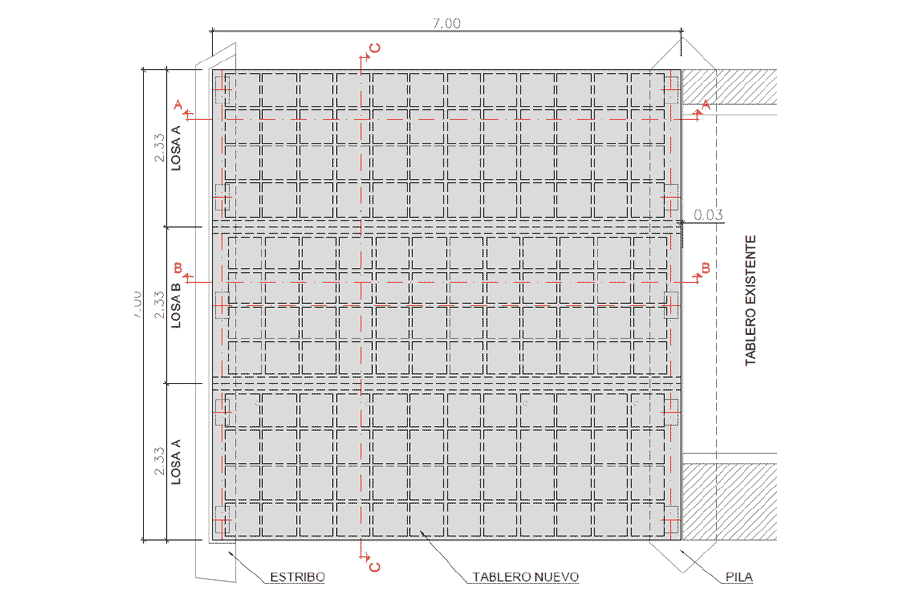

Only one year later (2019), a bridge in Alcira (50 km far from the previous bridge) suffered the impact of a truck, which destroyed its two first “double-T” beams. The contractor (BECSA) requested to RDC the design of the new two beams with UHPC, so if in the future there is a new collision the beams do not suffer a fragmentation that may hurt the driver. The new “double-T” UHPC elements were prestressed and produced at PREFFOR factory with the dimensions of the undamaged ordinary concrete beams.

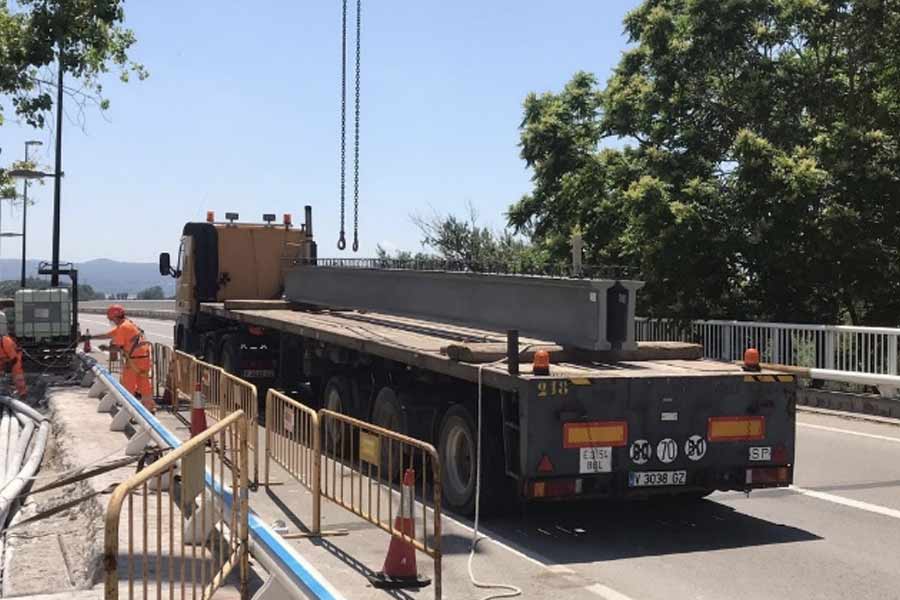
Finally, after the global lockdown in 2020 caused by the COVID-2019, the last two years were quite dynamic providing a great variety of novel applications. In 2021, the four floors of an historical building were rehabilitated with a composite solution timber-UHPC designed by RDC. The new use of the building, which was constructed on 1900, required an increase of the maximum design loads and necessarily the compliance of the minimum floor height. This minimum distance did not allow to install a typical concrete or steel flooring due to the depth. Besides, considering the special status of protection of this cultural heritage building, the timber elements of some of the floors needed to be integrated as part of the new flooring solution.
For these reasons, the building was rehabilitated with in-situ Formex®, the UHPC mix design of RDC. The solution minimized the weight per square meter of the flooring, avoiding overloads in the historical building and minimizing the timber creep. UHPC provided 40% of the performance after 24 h, so it facilitated the progress of the works and the early removal of the formworks.

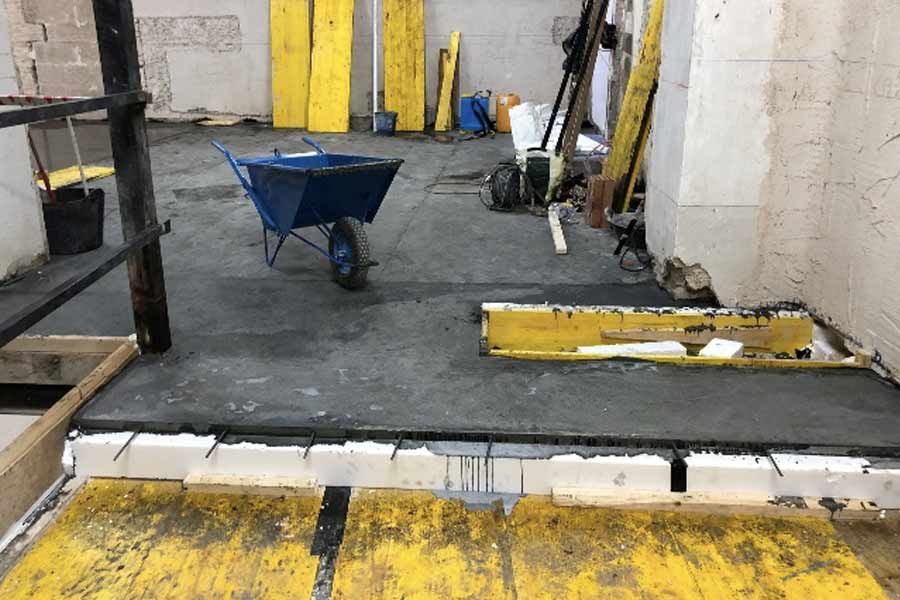
On the same year, RDC designed for the precast housing company Casas InHaus a 12-m length swimming pool in cantilever. Increasing the length of a cantilever is challenging due to the significant bending moment induced in the fixed support by the dead and live loads. UHPC was used to reduce up to 70% the weight compared to a concrete structure, so the depth of the element was reduced, having a piece with greater architectural value. This is a very common example of how lightness of a UHPC structure can not only reduce the costs, but also to provide additional value through aesthetics so that the client chooses a solution that is unfeasible with other materials. This precast prestressed element was produced by PREFFOR.
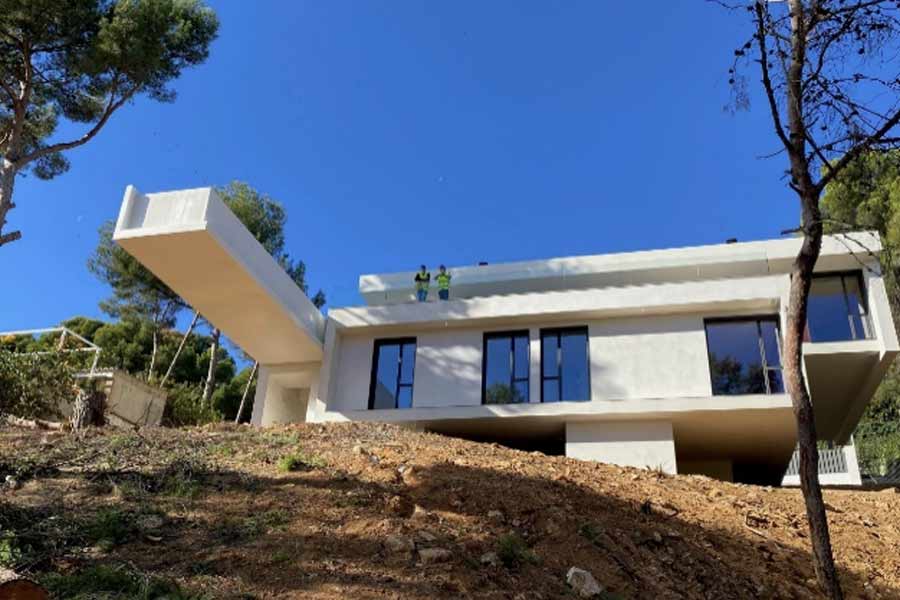
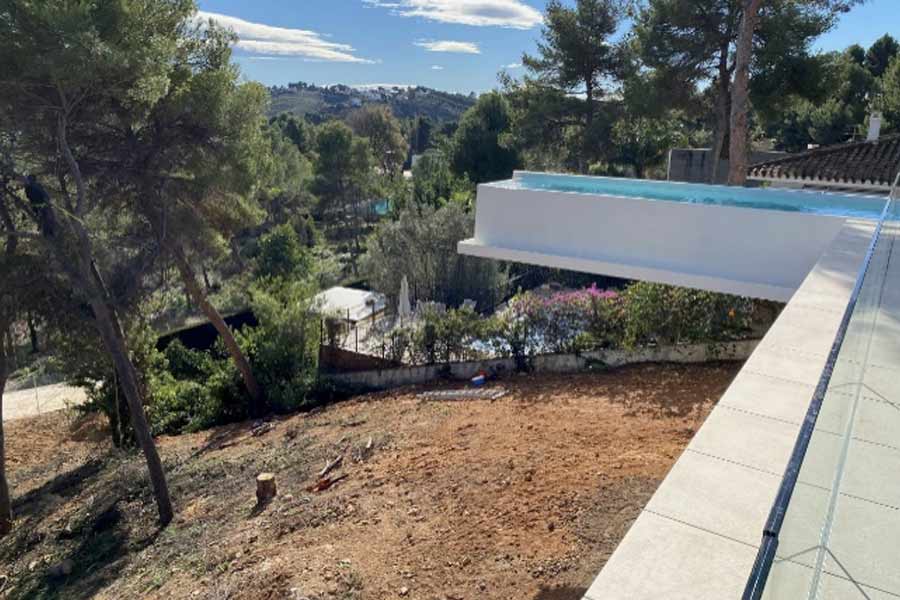
And last but not least, in 2022, RDC designed a UHPC component for a floating solar plant, using for first time in the world the material in this sector. Patented by RDC and Isigenere, this pontoon creates a perimeter that protects the plastic floaters from the waves, and at the same time is used as a stiffener to reduce to the minimum the number of moorings, reducing the CAPEX. The solution is currently available in the market and produced by PREFFOR.
The first use of this design was sold to Isigenere, which commissioned a 5 MW plant in Alqueva dam for EDP. The dam is the largest artificial lake of the European Union, and this installation is the largest floating solar plant in an EU dam.
Using UHPC was more competitive than other materials because in this application both durability and lightness provide a competitive advantage. Durability is important due to the humid environment and the abrasion and fatigue caused by the waves. The lightness of the solution is key for several aspects:
► A pontoon has an average density lower than 1. If the walls are thinner the weight is lower, so the depth of the pontoon can be reduced maintaining the density below 1 and reducing even more the weight and the costs. This makes the UHPC pontoon very competitive compared to concrete solutions.
► A lighter element requires less draft to float, so the hydrodynamic forces are lower, saving costs in mooring lines and connections.
► Transport and manipulation costs can be significantly reduced. In this example, transportation costs were divided by two compared with a traditional concrete solution.



Similar reasons explain why the substation of this plant was also made with UHPC: Durability, lightness, fire strength and resiliency were the main advantages to make of the floating substation of Alqueva plant the first one done in the world with UHPC. The dimensions of the substation were 12.3 m x 6.5 m, with a depth of 1.29 m, and the element was designed to carry on its center a container of 22 ton.
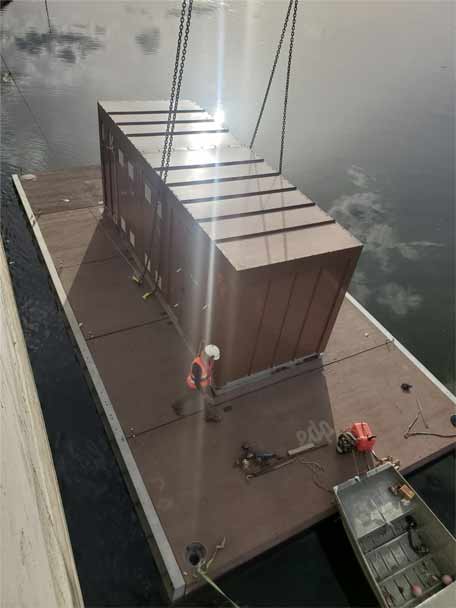

The table below summarizes the applications mentioned before, which I consider the most relevant structures made with UHPC up to date in Spain. The map shows the places where these milestones are located. In terms of volumes consumed, it should be highlighted that the more standardized product is the Formex® floating farm to harvest mussels, with around 40 structures (≈1.000 m3 of UHPC) installed, nearly 80% in Galicia region (producer of 45% of the EU mussel).
| Nº | Year | Application | Milestone with UHPC | Element | Location | Material | Exposure class | Volume (m3) |
| 1 | 2003 | Composite columns Museum Reina Sofía | 1st UHPC application in Spain | Circular columns, 16 m, d=32 cm | Madrid | Ductal®-AF | XC3 | ? |
| 2 | 2013 | Footbridge over the Oveja’s Ravine | 1st UHPC footbridge in Spain, 1st world truss footbridge made only of UHPC | 43-m UHPC truss, variable depth | Alicante | Formex® | XS1 | 26.7 |
| 3 | 2014 | UHPC footbridge over V-21 motorway | 2nd UHPC footbridge in Spain | two 33-m spans, constant depth. 317-m including ramps | Puçol, Valencia | Formex® | XS1 | 86.2 |
| 4 | 2016 | UHPC footbridge for Recycling Plant Rivera del Xuquer | 3rd UHPC footbridge in Spain | 7 spans in a range of 10 to 30 m. 3-m width | Guadassuar, Valencia | Formex® | XC3 | 83.7 |
| 5 | 2016 | Floating farm to harvest molluscs | 1st world UHPC floating platform. 1st world use of UHPC in aquaculture | 365 m2 (13.5 x 27 m). Currently more than 20.000 m2 installed | Mutriku, Vasc Country | Formex® | XS3 | 17.1 |
| 6 | 2018 | Road bridge over the Vernissa River | 1st UHPC road bridge in Spain | Three UHPC 7-m precast slabs with in-situ UHPC joints | Beniarjó, Valencia | Formex® | XC4 | 7.3 |
| 7 | 2019 | Reparation of road bridge after impact. Alcira, Valencia | 1st bridge reparation with UHPC in Spain | Two double T beams of 11 m of span replacing damaged beams | Alcira, Valencia | Formex® | XC4 | 1.4 |
| 8 | 2021 | Renovation of 4-storey historical building with timber-UHPC beams | 1st project completely executed with in-situ UHPC | Unidirectional slabs with minimum thickness of 35 mm | Valencia | Formex® | XC2 | 25.6 |
| 9 | 2021 | 12-m long UHPC swimming pool in cantilever | 1st world UHPC pool in cantilever | Precast prestressed beam with a depth of 1.80 m | Chiva | Formex® | XS3 | 8.8 |
| 10 | 2022 | Perimetral UHPC stiffeners-pontoons for floating solar plant | 1st world use of UHPC in a floating solar plant | 13.4 m length with 0.5 m of depth floating elements connected | Alqueva dam (border Portugal-Spain) | Formex® | XC4 | 148.8 |
| 11 | 2022 | Floating UHPC substation for floating solar plant | 1st world UHPC floating substation | Five elements with depth of 1.29 m connected | Formex® | XC4 | 19.8 |
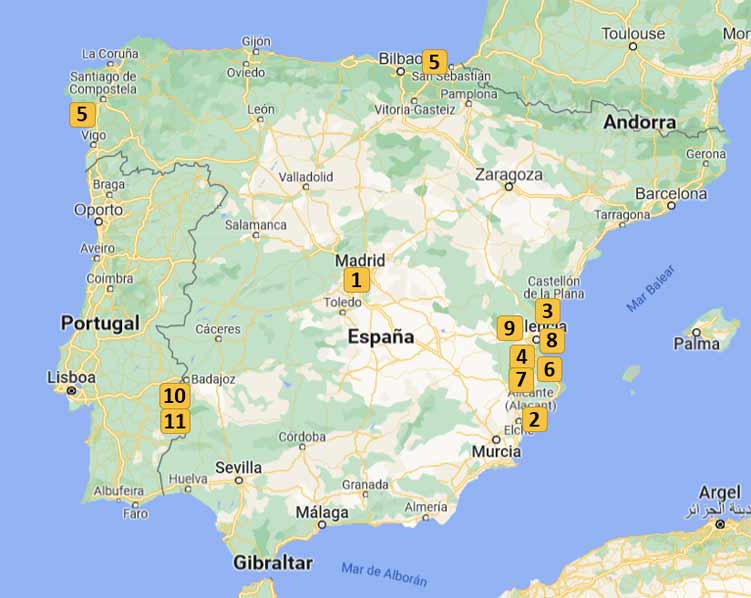
This variety of successful applications is a prove of the better and better understanding of the UHPC possibilities in Spain. My perception is that a key success factor to innovate is to lose the fear to test, to play, to challenge the conventional. I like to look back and see the motivation we had already twelve years ago to do something interesting, and I love to see that today we still have the same spirit, and we can make things real in our factory.
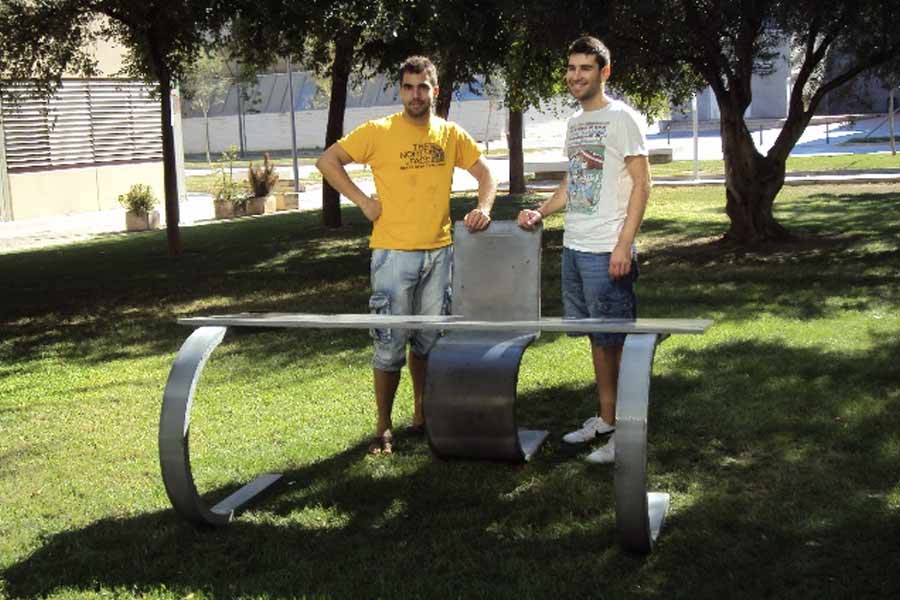
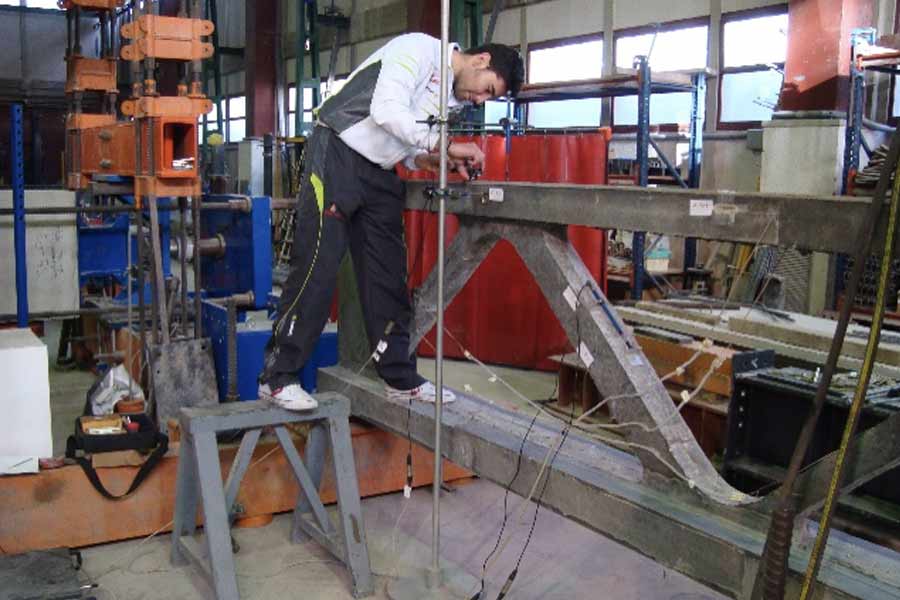
I would say that next years appear promising for the development of new applications, and my wish is that this post encourages engineers (not only the Spanish ones!) to consider UHPC in their designs. In RDC and PREFFOR we are available to provide support and cooperate with you! 😊
Note: In this post I wanted to highlight the applications which I consider a milestone for the state of the art of UHPC structures, so I did not include the use of UHPC for the elaboration of façade panels, cladding or urban furniture, where companies as Prehorquisa or Escofet are experts. Neither the use of semi-structural UHPC panels for the construction of precast housing, where PREFFOR has prefabricated elements for more than 100 buildings.
References:
[1] What Really is Ultra-High Performance Concrete? Towards a Global Definition. November 2018. Conference Paper. Vic H. Perry. CeEntek North America.


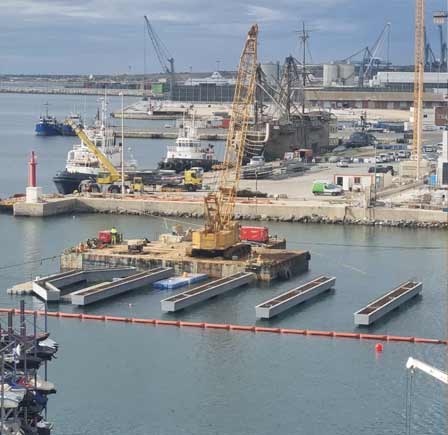
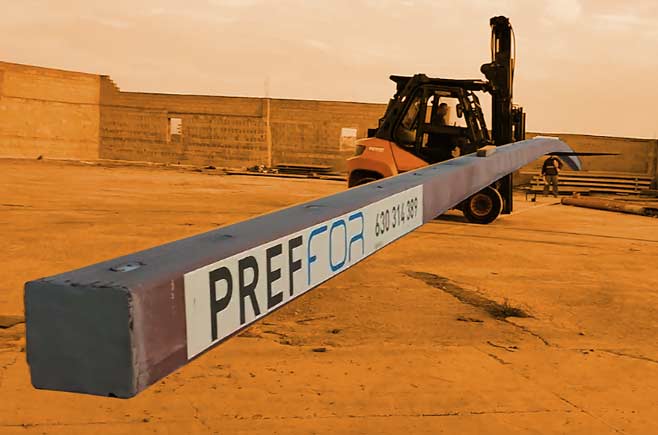

One Response
Muy interesante resumen, que hablan del potencial que tiene el uso de UHPC